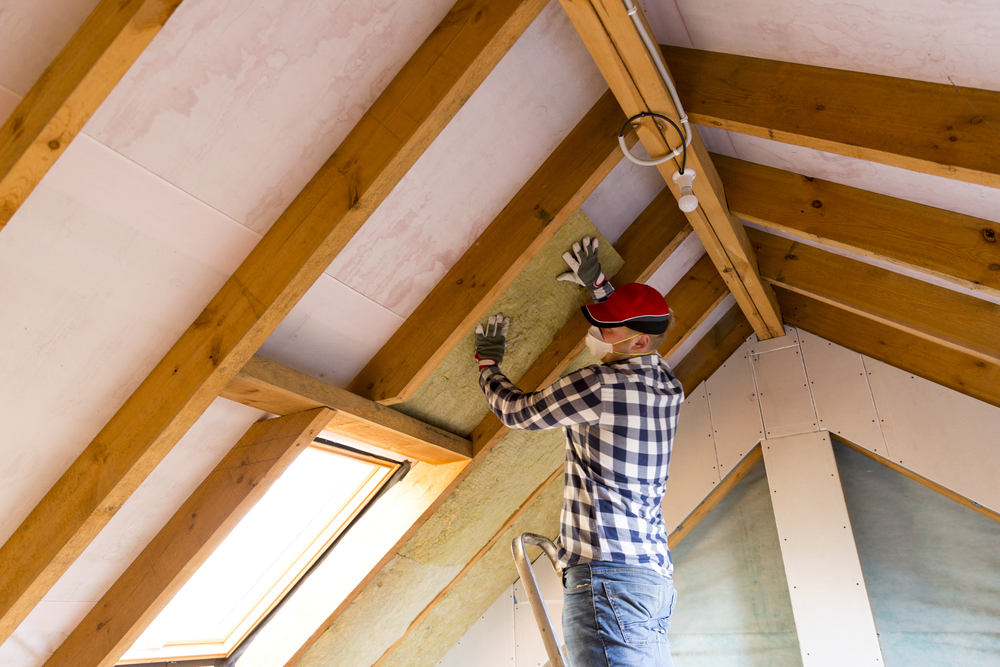
Many homeowners today are looking for ways to reduce their carbon footprints. It may surprise you that sufficient home insulation is an effective way to help your household maintain a smaller carbon footprint.
What Is a Carbon Footprint?
If you’re not quite sure what it means to reduce your carbon footprint, you’re not alone. Most people have a vague understanding that it means reducing your energy consumption, but your carbon footprint is more directly related to the carbon emissions you produce.
In terms of maintaining a green home, this means reducing the carbon emissions that your household produces. Even small changes, such as changing from incandescent light bulbs to LED bulbs, can have a significant impact on your home’s carbon footprint.
Additionally, proper home insulation will help you lower your household’s annual carbon emissions.
Use a Combination of Batt and Roll and Spray Foam Insulation
Your attic is probably lined with batt and roll insulation, and this type of insulation does work well when an insulation contractor cuts it to size. It’s trimmed to fit between the wood beams in your attic and customized to fit snugly around window and door frames. Batt and roll insulation helps retain most of the treated air in your home.
However, there are tight spaces and small gaps in your attic that batt and roll insulation won’t cover. For these areas, spray foam insulation is the better option.
The foam is sprayed into tight crevices and over gaps left by vents, pipes, and other fixtures that lead outdoors. Once the spray foam insulation hardens, it creates a strong bond that prevents treated air from escaping the home.
As a result of insulating these difficult areas, you’ll find that your indoor temperature remains consistent for longer. This means your HVAC system will cycle less frequently, and you’ll use less energy to maintain a comfortable indoor environment.
Whichever type of insulation you choose, you can have an even bigger impact on your home’s carbon footprint by ensuring your insulation is made from wood fiber or cellulose, since these materials don’t include carbon in the manufacturing process.
What Areas Should You Insulate in and Around Your Home?
For the biggest impact on your household’s carbon footprint, you should insulate any area that can affect the overall temperature inside your home. Insulation installers can insulate floors above vented crawl spaces, attic and basement doors, ducts in untreated areas, garages, and storage sheds.
You can choose between ceiling insulation and attic deck or rafter insulation. If you have a closed or unvented attic, ceiling insulation is usually the best option. However, it may be better to add attic deck insulation if there’s a vent in this space. Your insulation contractor can offer you suggestions based on the type of attic in your home.
What R-Value Is Best for Reducing Carbon Emissions?
While there isn’t a single correct answer to this question, it’s important to note that enough insulation to help your home retain heat will also reduce your carbon emissions. It does this by reducing your need to heat your home as frequently, resulting in lower energy usage.
The R-value you need from the insulation in your home will vary based on the climate in which you live. For example, exterior wall insulation should have a range of R-13 to R-23. If you live in a colder climate, you’ll want an R-value closer to 23. R-values of 30, 38, and 49 are best for attics and ceilings.
Insulation contractors in your community will know the appropriate R-value for any spaces you want to insulate.
Keep an Eye on Your Insulation
While insulation should last for up to 25 years, you should still inspect it from time to time. Exposure to moisture, humidity, and other environmental factors can damage your home’s insulation. Replacing worn or damaged insulation will help you keep your home as energy-efficient as possible.

